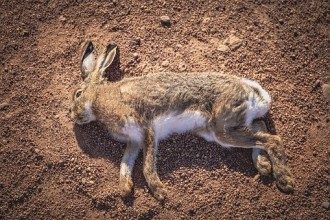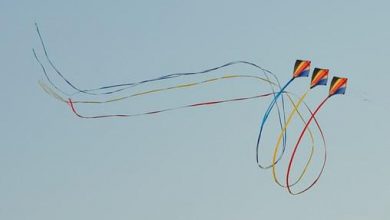
In Wife Hits Moose, Thomas Lux narrates the moments leading up to, during, and shortly after an unidentified ‘wife’ smashes a ‘moose’ in a rural area in the poem “Wife Hits Moose”. The underlying connotations in the diction of the first three stanzas are sardonic. The last stanza reflects postmodern traits where the poem’s ambiguities reside. The reader is led to believe that the text is about the uneven relationship between man and the environment, as well as their troubled relationship with God, rather than being just a poem about a human-animal collision.
Wife Hits Moose is a poem by Thomas Lux from NEW AND SELECTED POEMS, published by Houghton Mifflin Co. (1997).
Wife Hits Moose | Summary and Analysis
Wife Hits Moose is an example of narrative poetry. The lack of articles from the nouns in the title, as well as the opening verse, is the first noticeable technique employed by Lux. Both ‘wife’ and ‘moose’ are used without any qualifiers, making them seem archetypal. This gives the poem a generality, the moose might be any moose, and the wife could be any wife. Surprisingly, the absence of detail allows the reader to connect more directly with the subject matter by removing it from its context.
Wife Hits Moose, Lines 1-7
Sometime around dusk moose lifts
his heavy, primordial jaw, dripping, from pondwater
and, without psychic struggle,
decides the day, for him, is done: time
to go somewhere else. Meanwhile, wife
drives one of those roads that cut straight north,
a highway dividing the forests
The scene opens up when it is ‘about dusk,’ a time that lies close to end of daylight. This could indicate the conclusion of light and the beginning of dark. Lux’s description of the moose as having a ‘heavy, primaeval jaw’ and unable to give any ‘psychological resistance’, indicates the moose’s tiredness. It could potentially be an indicator of the fatigue of nature itself, and bringing with it the thought that ‘the day, for him, is done,’ adds to this impression of a shift in the status quo. The caesura, as shown by the writer’s choice of a colon, gives us the impression that the moose is ready to move ‘somewhere else.’ The moose’s actions are given a nebulous, directionless feeling by the use of the diction ‘somewhere,’ as though it, and thus nature, is listless-acting without emotion or motive.
Lux uses a full stop followed by the diction ‘meanwhile’ to transfer the reader’s focus away from the moose onto his wife, as though switching between situations. We learn that the wife is driving north on a ‘cut’ across the forest road. The plosive word ‘cut’ expresses the harshness and damage with which the road was constructed, with no concern for the welfare of the surrounding woodland.
Wife Hits Moose, Lines 8-14
not yet fat enough for the paper companies.
This time of year full dark falls
about eight o’clock — pineforest and blacktop
blend. Moose reaches road, fails
to look both ways, steps
deliberately, ponderously . . . Wife
hits moose, hard,
When we move into the second verse, we learn that the only reason this forest remains is that it is useless to mankind’s rampant exploitation—it is “not yet fat enough for the paper companies.”.
Lux uses enjambment to emphasize the human impact on nature. The road not only cuts through the forest but the wife’s movement is mentioned between the two stanzas, reflecting both her speed and the speed with which humans are encroaching on nature. Time has also marched forward, and it is now unmistakably night, ‘about eight o’clock,’ and therefore dark.
She, like humanity, could be said to be pushing blindly into the abyss of nature. Line 11’s caesura returns our attention to the moose, which, unlike the reader, is not privy to the same information. It is unaware of the arrival of the wife, so it “fails to look both ways” and treads onto the road with adverbs that suggest impending disaster: “deliberately” and “ponderously.”
The reader is left waiting for the inevitable at this point in the poem, which is heightened by the characters’ obliviousness to one another’s presence. The actions of the moose are anthropomorphized, making it appear more like a human pedestrian because it ‘fails to look both ways.’ In this stanza, the image of a moose as a pedestrian against a backdrop of an urban environment is employed frequently.
Wife Hits Moose, Lines 15-21
at slight angle (brakes slammed, car
spinning) and moose rolls over hood, antlers —
as if diamond-tipped — scratch windshield, car
damaged: rib of moose imprint
on fender, hoof shatters headlight.
Annoyed moose lands on feet and walks away.
Wife is shaken, unhurt, amazed.
With the moose’s innocence and the wife’s implied recklessness, the reader is probably concerned by the end of the second stanza that the moose will come out on the short end of the stick. Lux, on the other hand, plays with the audience’s expectations by having the car come to a tremble in the collision. The woman is the one who is ‘shaken,’ not the moose, who is only ‘annoyed’ but unharmed.
The car, the mechanized icon of human intervention, has its ‘headlight’ shattered by the moose’s hood and is depicted as ‘damaged’. The entire occurrence is presented in the present tense to give it the aforementioned sense of immediacy and hyphens are used to switch from one component of the crash to the next, lengthening the impact and giving it greater significance than the split-second crash would otherwise have. Lux’s use of analogy in portraying the moose’s antlers as ‘diamond-tipped,’ with diamonds evocative of preciousness and longevity- neatly encapsulates the idea that nature has the actual power, with mankind stumbling and impotent- is the most striking image in this stanza.
Wife Hits Moose, Lines 22-28
— Does moose believe in a Supreme Intelligence?
Speaker does not know.
— Does wife believe in a Supreme Intelligence?
Speaker assumes as much: spiritual intimacies
being between the spirit and the human.
Does speaker believe in a Supreme Intelligence?
Yes. Thank You.
The fourth stanza departs from the scene’s immediacy, and, while retaining the same lexical simplicity, Lux invites the reader to reflect by posing three enigmatically answered questions. We are asked whether the moose, his wife, or even the speaker believe in ‘Supreme Intelligence.’
Although we cannot be certain what is meant by this we can infer from previous stanzas. The implicit arrogance of humans and the pomposity of the term which is reflected in both capitalization and Latinate diction that ‘Supreme Intelligence’ reflect the concept of divine intelligence. Lux has infused this final stanza with a poignant irony: the wife, it is ‘assumed,’ believes in the supreme intelligence, according to ‘speaker.’ The verb ‘assumes’ reflects the lack of certainty—not in humans, but God. Does the omniscient and article-less ‘speaker’ believes in a Supreme Intelligence, its definition is never specified. ‘Yes,’ even if, in the modern era, this confident assertion is tinged with the postmodern platitudinous irreverence of ‘Thank you.’
It is unclear why Lux chooses to explicitly reveal the speaker and ‘break the fourth wall’. It may convey the idea that the speaker has been manipulating the reader from the start. The poem was intended to be a narrative, but we learn in the final lines that we have been reading something more akin to an existential treatise. The story about a wife hitting a moose was more of a meditation on the exact nature of what constitutes genuine ‘Supreme Intelligence’ in our world—is it man, nature, or a morally ambiguous higher power?
Wife Hits Moose | About the author
Thomas Lux was an American poet who served as the Margaret T. and Henry C. Bourne, Jr. Chair in Poetry at Georgia Institute of Technology and directed the “Poetry @ Tech” program. He was the author of fourteen poetry collections. Lux died of lung cancer on February 5, 2017 in Atlanta, Georgia. He had a strong belief in the power of poetry to change people’s lives. The Glassblower’s Breath (1976), Sunday (1979), Half Promised Land (1986), The Blind Swimmer: Selected Early Poems, 1970–1975 (1996), New and Selected Poems, 1975–1995 (1997), The Cradle Place (2004), God Particles (2008), Child Made of Sand (2012), Selected Poems (Bloodaxe Books, UK, 2014), To the Left of Time (2014) are among his works (2016).
WRITING CREDIT :
A significant portion of this work may be attributed to Mr. David Pollicutt.
Mr. Pollicutt is currently working as the Head of Faculty (English) at HeadStart International School, Phuket, Thailand.
Founded in 2005, HeadStart has rapidly developed into one of the leading International Schools in Phuket. HeadStart is a high achieving, co-educational British International School. It offers the English National Curriculum for students from 2 to 18 years of age and currently has 800 students enrolled representing 45 different nationalities.
The school has an ongoing mission to build and support a dedicated team of professional educators who work together to provide a quality teaching and learning environment for Phuket’s international and culturally diverse community. Professionals like Mr. Pollicutt help in providing a much-needed head start to students to venture forth and take on the challenges of personal and professional life.
Here’s a link to the school’s website and its Youtube Page :
Website – https://headstartphuket.com/en


